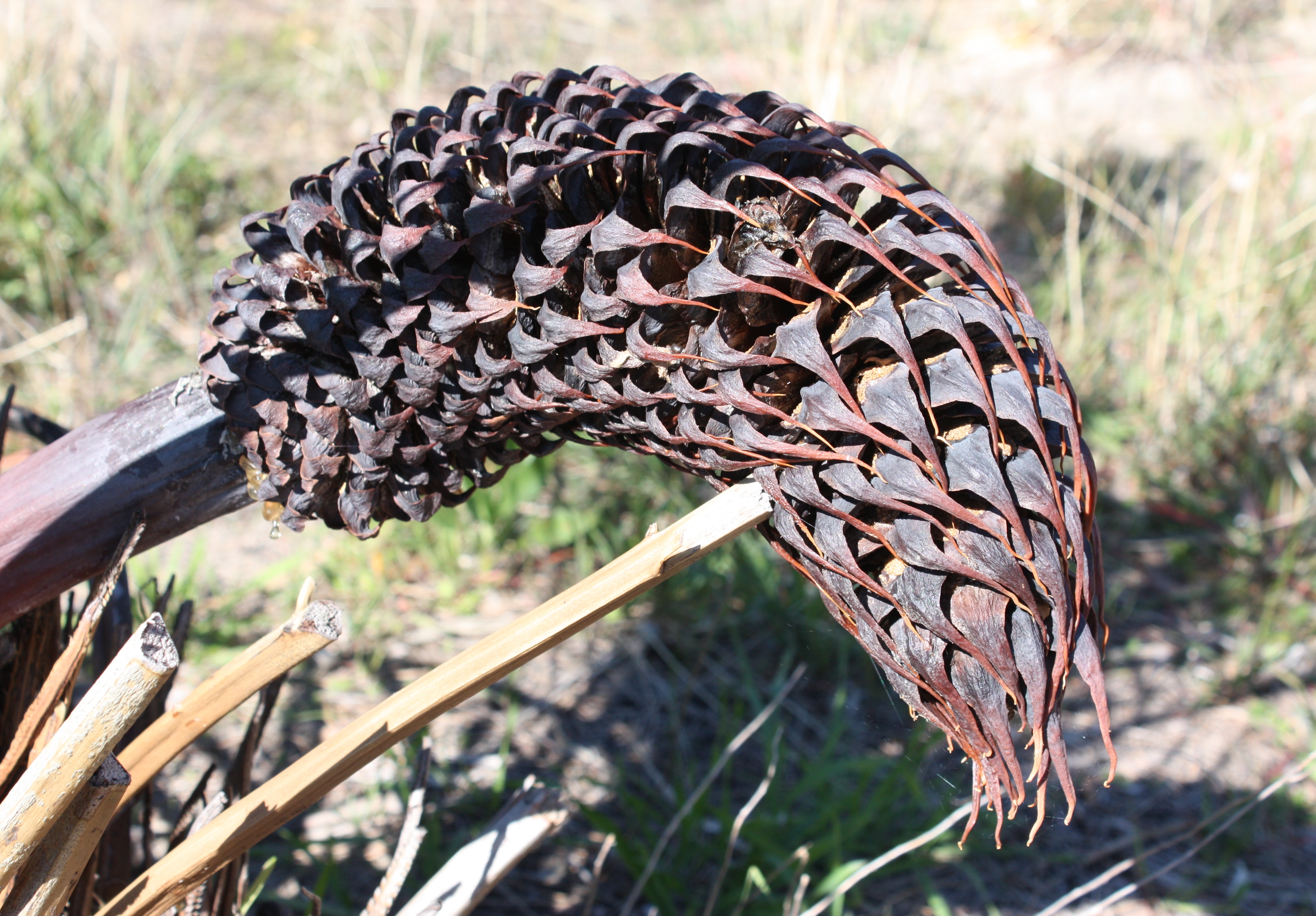Macrozamia on:
[Wikipedia]
[Google]
[Amazon]
''Macrozamia'' is a genus of around forty species of
 The first description of the genus was published in 1842 by
The first description of the genus was published in 1842 by
cycad
Cycads are seed plants that typically have a stout and woody (ligneous) trunk (botany), trunk with a crown (botany), crown of large, hard, stiff, evergreen and (usually) pinnate leaves. The species are dioecious, that is, individual plants o ...
s, family Zamiaceae
The Zamiaceae are a family of cycads that are superficially palm or fern-like. They are divided into two subfamilies with eight genera and about 150 species in the tropical and subtropical regions of Africa, Australia and North and South America. ...
, all of which are endemic
Endemism is the state of a species being found in a single defined geographic location, such as an island, state, nation, country or other defined zone; organisms that are indigenous to a place are not endemic to it if they are also found elsew ...
to Australia
Australia, officially the Commonwealth of Australia, is a Sovereign state, sovereign country comprising the mainland of the Australia (continent), Australian continent, the island of Tasmania, and numerous List of islands of Australia, sma ...
. Many parts of the plant have been utilised for food and material, most of which is toxic if not processed correctly.
Description
A genus ofcycad
Cycads are seed plants that typically have a stout and woody (ligneous) trunk (botany), trunk with a crown (botany), crown of large, hard, stiff, evergreen and (usually) pinnate leaves. The species are dioecious, that is, individual plants o ...
s with partially submerged bole or tree, small to medium height, bearing a crown of palm-like fronds. The dioecious
Dioecy (; ; adj. dioecious , ) is a characteristic of a species, meaning that it has distinct individual organisms (unisexual) that produce male or female gametes, either directly (in animals) or indirectly (in seed plants). Dioecious reproductio ...
plants bear large cones, becoming even larger when ripening on the female, containing reproductive parts of great size.
Distribution
The greatest diversity of species occurs in eastern Australia, in southeastQueensland
)
, nickname = Sunshine State
, image_map = Queensland in Australia.svg
, map_caption = Location of Queensland in Australia
, subdivision_type = Country
, subdivision_name = Australia
, established_title = Before federation
, established_ ...
and New South Wales
)
, nickname =
, image_map = New South Wales in Australia.svg
, map_caption = Location of New South Wales in AustraliaCoordinates:
, subdivision_type = Country
, subdivision_name = Australia
, established_title = Before federation
, es ...
, with one species in the Macdonnell Ranges
The MacDonnell Ranges, or Tjoritja in Arrernte, is a mountain range located in southern Northern Territory. MacDonnell Ranges is also the name given to an interim Australian bioregion broadly encompassing the mountain range, with an area of .< ...
of Northern Territory
The Northern Territory (commonly abbreviated as NT; formally the Northern Territory of Australia) is an states and territories of Australia, Australian territory in the central and central northern regions of Australia. The Northern Territory ...
and three in the southwest region of Australia.
Taxonomy
 The first description of the genus was published in 1842 by
The first description of the genus was published in 1842 by Friedrich Anton Wilhelm Miquel
Friedrich Anton Wilhelm Miquel (24 October 1811 – 23 January 1871) was a Dutch botanist, whose main focus of study was on the flora of the Dutch East Indies.
Early life
Miquel was born in Neuenhaus and studied medicine at the University of Groni ...
in his ''Monographia Cycadearum'', without designating a type.
The common name "burrawang", originally referring to ''M. communis'' in the Daruk Australian Aboriginal language, is often used for all the species in the genus.
Informal names published in state listing for the genus include 'rickets' (Bailey, 1931) in Queensland, a name also used in Western Australia for the symptoms of ingestion of species by cattle,
and terms zamia, zamia palm, burrawang palm (Ross, 1989) and djeeri (Hopper, 2014) continued to be noted by New South Wales, QLD and W.A. authors in specific and generic usages.APNI cite: Bailey, F.M. (1913), ''Comprehensive Catalogue of Queensland Plants'': 513
Species
References
* *External links
* * * * * * {{Taxonbar, from=Q138789 Endemic flora of Australia Cycadophyta of Australia Taxa named by Friedrich Anton Wilhelm Miquel